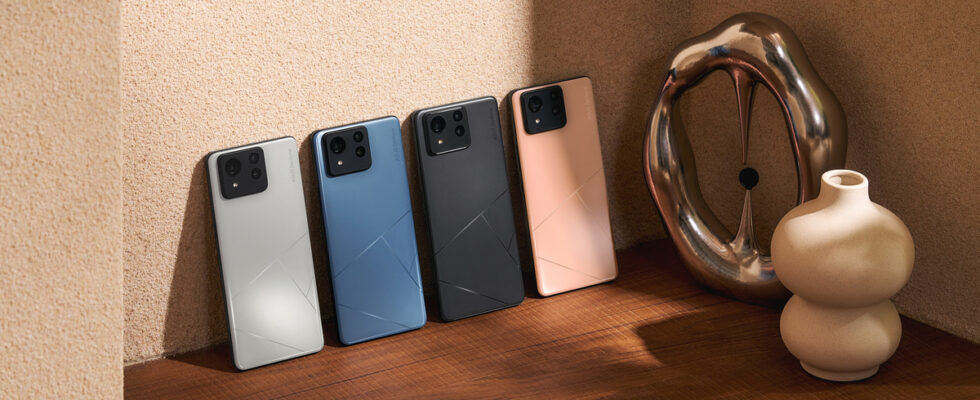Just a few weeks after the launch of the ROG Phone 8, a smartphone aimed at gamers, Asus presents its latest consumer model branded Zenfone. Enough to silence the rumor which announced the disappearance of this series, but also to surprise aficionados of the brand, since the Zenfone 11 Ultra just made official breaks with the codes of its predecessors.
While the Zenfone 9 and 10 established themselves as devices that were both compact and powerful, Asus is changing its tune this year and offering a radically different Zenfone 11 Ultra. As its “Ultra” stamp suggests, this smartphone is intended to be uncompromising and, to integrate as many components as possible into the device, the Taiwanese has chosen a format that is no longer mini, but maxi: the device ( certified IP68) measures 163.8 x 76.8 x 8.9 mm for 224 grams and houses a 6.78 inch screen, far from the 5.92 inches of the Zenfone 10. We immediately see that Zenfone 11 Ultra shares the vast majority of its technical sheet with the ROG Phone 8 Pro, starting with its screen diagonal, the technology it uses (Amoled, with LTPO), its announced brightness (2500 cd/m²) and its maximum refresh rate of 144 Hz.
The two smartphones share other elements: under their hood is the Snapdragon 8 Gen 3 chip, even if the Zenfone 11 Ultra, which offers 12/256 GB and 16/512 GB configurations, comes with a little less RAM than its companion gamer. Among the common points, we note the integration of an imposing 5500 mAh battery allowing fast charging at 65 W (wired) or 15 W (wireless), without forgetting a triple back photo module. Like the ROG Phone 8 Pro, the Zenfone 11 Ultra offers a 50 Mpx main sensor supplemented by wide-angle optics (f/1.9), with type stabilization gimbal, an ultra-wide-angle module (13 Mpx sensor, f/2.2 optics) and a final 32 Mpx sensor associated with a stabilized telephoto lens (3x magnification, f/2.4). The mini-jack socket, which has practically disappeared from the high-end world, except at Sony and Asus, remains in the game.
An ROG for gaming, a Zenfone for AI
In short, the identity card of this Zenfone 11 Ultra is reminiscent, from a strictly technical point of view, of the ROG Phone 8 Pro, in a slightly more discreet mold, without RGB lighting and other external coolers. On the other hand, the smartphone intends to stand out by integrating functions linked to essential artificial intelligence. We can cite AI Transcript, which allows you to transcribe conversations recorded via the device’s dictaphone, AI Call Translator, intended to translate telephone conversations on the fly, but also tools for carrying out semantic search in applications such as the photo gallery and AI wallpapers, which can be found on the smartphone. For the moment, these options are not activated on the Zenfone 11 Ultra, but they will arrive through an update whose date has yet to be specified. On the other hand, they will constitute a way for the device to stand out from the ROG Phone 8 Pro, since Asus does not plan, to date at least, to bring them to the mobile gamernor even on the Zenfone 10 and 9.
Larger and better equipped than its predecessors, this Zenfone 11 Ultra illustrates the ambition of the Taiwanese firm to seduce not only by its format, but by a high technical level and a software component in keeping with the times; We regret, however, that the manufacturer does not offer more than two years of Android updates (four years of security patches). The price of the smartphone finally bears the mark of the efforts made by Asus to add luster to its series of mobiles: count on €999.99 for the 12/512 GB version of the device, and an additional €100 for its 16/512 GB version. 512 GB.
